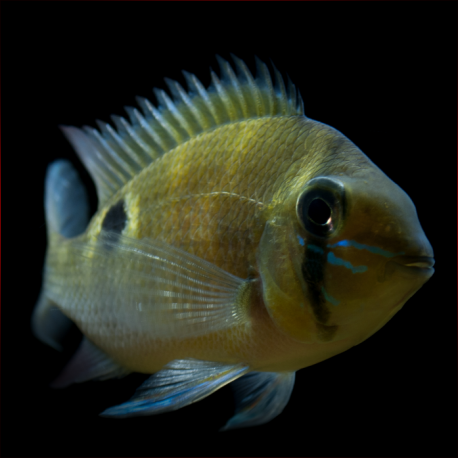More info
Datasheet
| Minimum Tank Size | 300 litres / 79.25 US gallons |
| Maximum Size | 10.0cm / 3.94inches |
| Temperature | 20°C / 68.00°F - 30°C / 86.00°F |
| Hardness | 1.01dgH / 18ppm - 5.04dgH / 90ppm |
| pH | 5.0-7.0 |
Behaviour:
The Cupid Cichlid is generally peaceful, except when breeding, and does not prey on fish larger than a few millimeters. It can coexist with numerous peaceful species as tankmates, forming a dominance hierarchy within a group of 5-8 individuals. It is advisable to avoid aggressive or territorial tankmates and maintain a group to prevent weaker specimens from being bullied.
Feeding and Diet:
The Cupid Cichlid's diet should consist of high-quality prepared foods, live or frozen chironomid larvae, bloodworms, Tubifex, Artemia, and other similar foods. Including vegetable matter in dried products is crucial, and feeding smaller portions multiple times a day can enhance growth rate and condition. Homemade gelatine-bound recipes with a mix of fish food, shellfish, fruits, and vegetables are also beneficial for their diet.
Reproduction & Dimorphism:
As biparental substrate spawners, Cupid Cichlids prefer laying eggs on partially buried rocks in the substrate. Sexual maturity is reached at 18-24 months, and simulating seasonal changes can induce breeding. Males and females display distinct behaviors before, during, and after spawning. Sexual dimorphism is observable through the pattern of iridescent blue markings, with males having unbroken stripes, while females have blotches, along with size and fin differences.
Habitat and Distribution:
The Cupid Cichlid is distributed throughout the Amazon basin, from the Ucayali system in Peru to the Tocantins drainage in Brazil. Its habitat varies due to seasonal flooding, with preferences for clear, tannin-stained water. In captivity, a soft, sandy substrate is recommended, along with driftwood, rocks for potential spawning sites, and appropriate lighting. Water quality is crucial, requiring filtration and regular water changes to avoid health issues.

